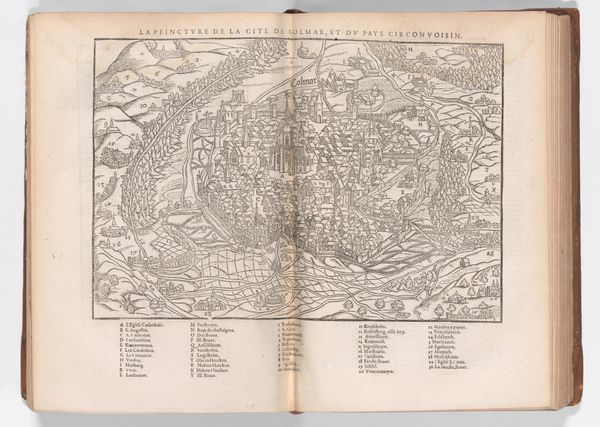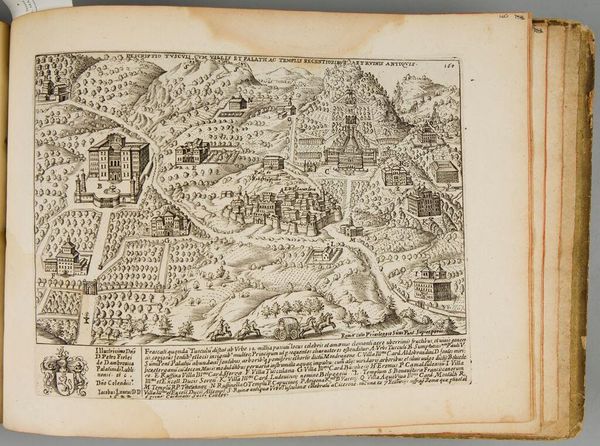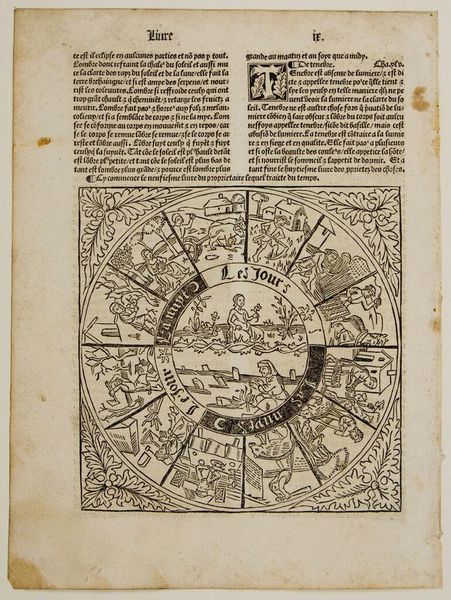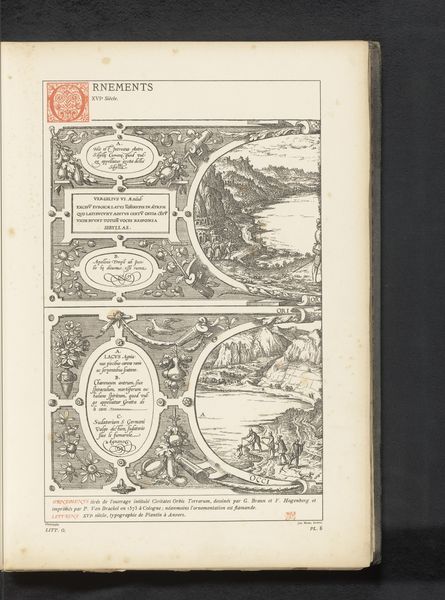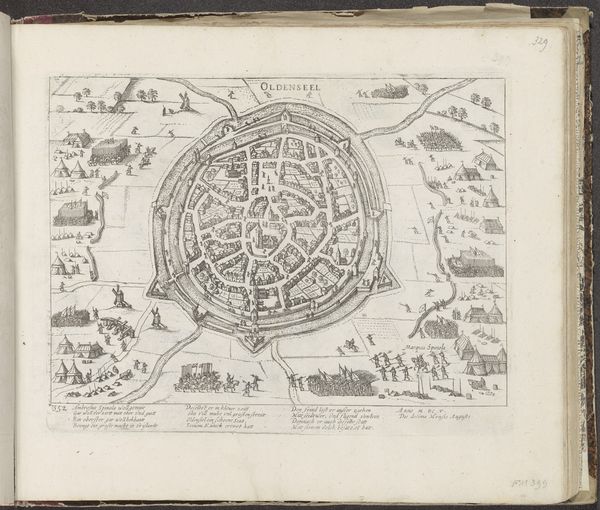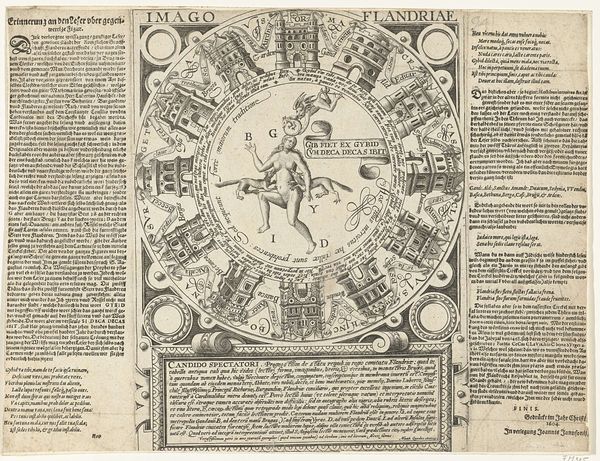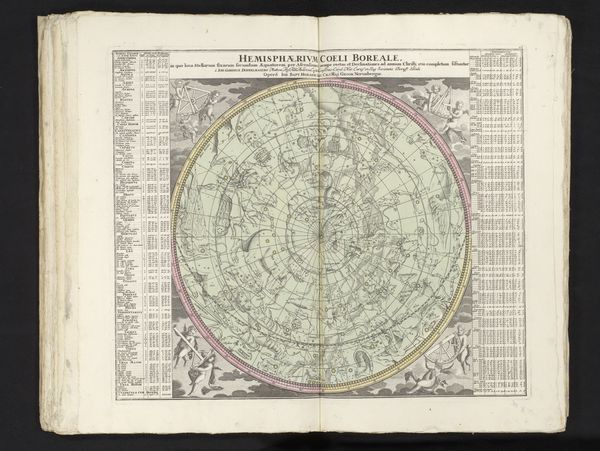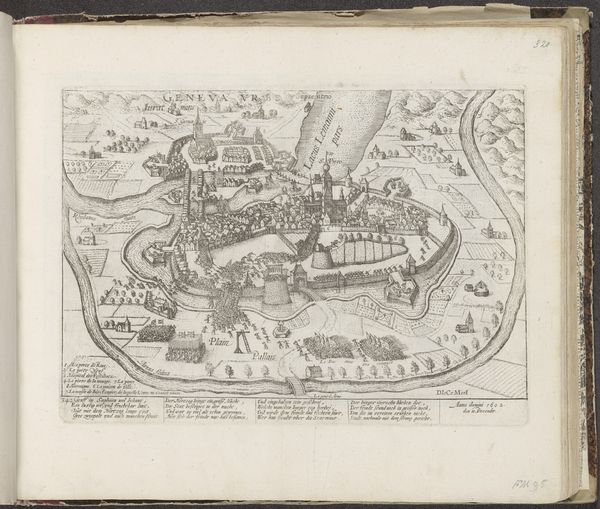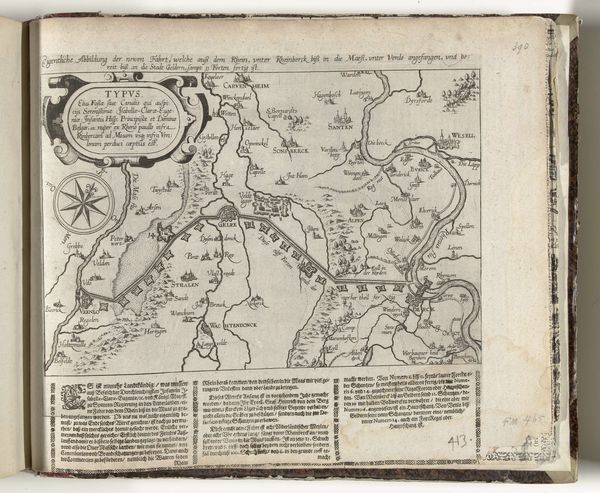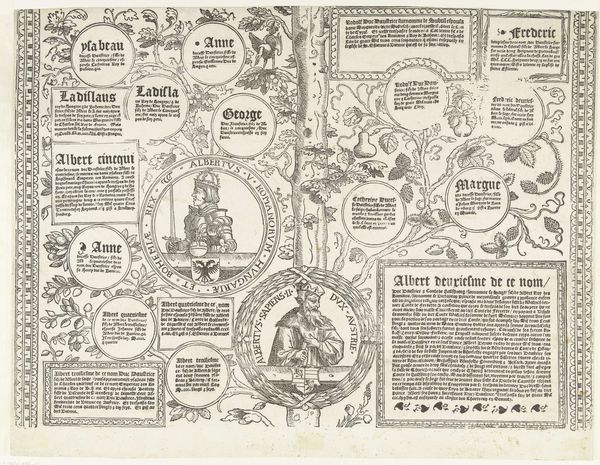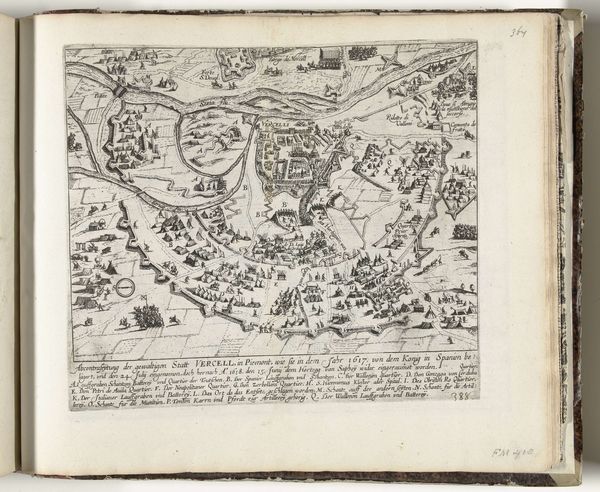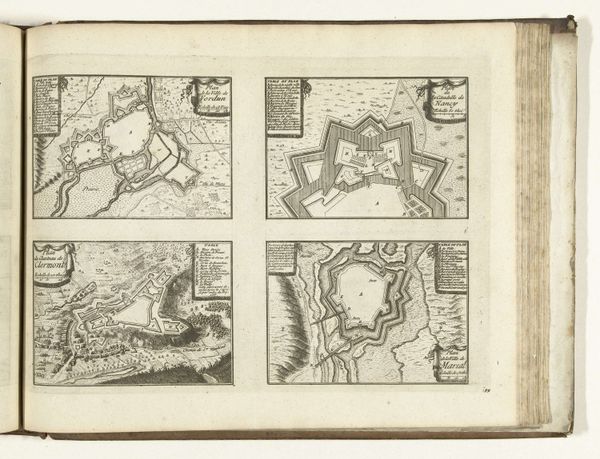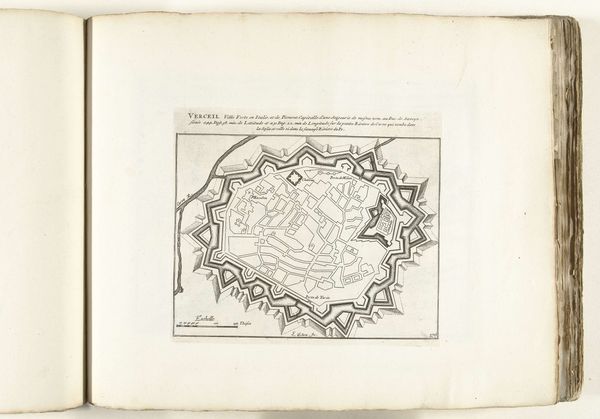
drawing, print, paper, ink, woodcut
#
pen and ink
#
drawing
# print
#
paper
#
ink
#
woodcut
#
history-painting
#
northern-renaissance
Dimensions: 17 5/8 x 12 3/8 x 3 1/4in. (44.8 x 31.4 x 8.3cm)
Copyright: Public Domain
This is a page from The Nuremberg Chronicle, a book made around 1493 in Nuremberg, Germany, by Michael Wolgemut and others. It's essentially an encyclopedia telling the history of the world according to Christian beliefs. Printed during a time of immense shifts in power, religion, and global exploration, this book is a fascinating look into the mindset of 15th-century Europe. What strikes me most is the intersection of the known and unknown. Look at the map: recognizable continents sit alongside fantastical creatures, reflecting a world only partially revealed to Europeans. These images tell us much about their limited geographic knowledge, as well as their cultural and religious biases. The Chronicle helped shape how Europeans saw themselves in relation to the world, and how they legitimized their place in it. Ultimately, The Nuremberg Chronicle is a reminder of how our understanding of the world is always changing. We’re all trying to map our place in the world, both literally and figuratively, aren't we?
Comments
minneapolisinstituteofart almost 2 years ago
⋮
At the end of the 15th century, the new industry of book printing reached its zenith in Nuremberg, Germany. This book, which was written by Dr. Hartmann Schedel, recounts the history of the world from Creation to the early 1490s with lessons in religion and geography intermingled with unusual and interesting facts and phenomena. The expensive enterprise was funded by Sebald Schreyer and S. Kammermeister, who hired Anton Koberg's firm to print it. Koberg operated twenty-four presses and printed 1,500 copies of the book in Latin and an additional 1,000 copies in German. The copy on display is from the first Latin edition. This edition was more carefully laid out and printed because it appealed to a more learned audience. The Chronicle contains 1809 prints taken from 645 actual woodcuts, resulting in 1164 repetitions. The woodcuts were created in the workshop of Michael Wohlgemut, who was assisted by his stepson Wilhelm Pleydenwurff. In addition to his work on the Chronicle, Wohlgemut is famous as the instructor of Albrecht Dürer, who some scholars believe contributed several images to this book
Join the conversation
Join millions of artists and users on Artera today and experience the ultimate creative platform.
